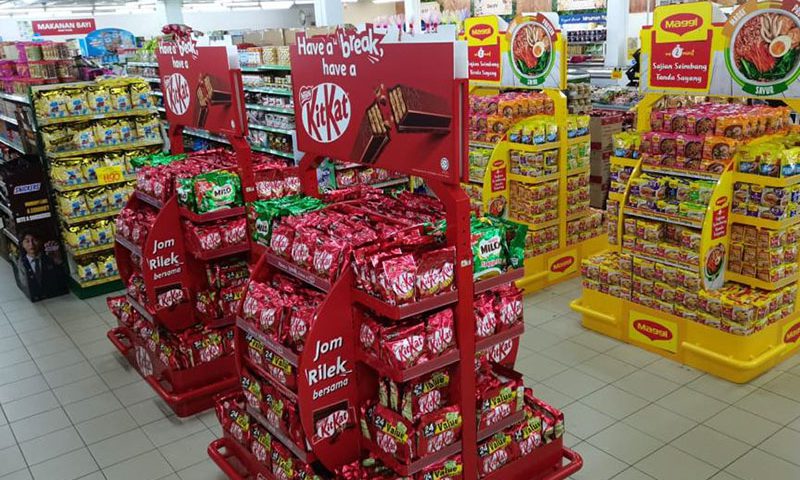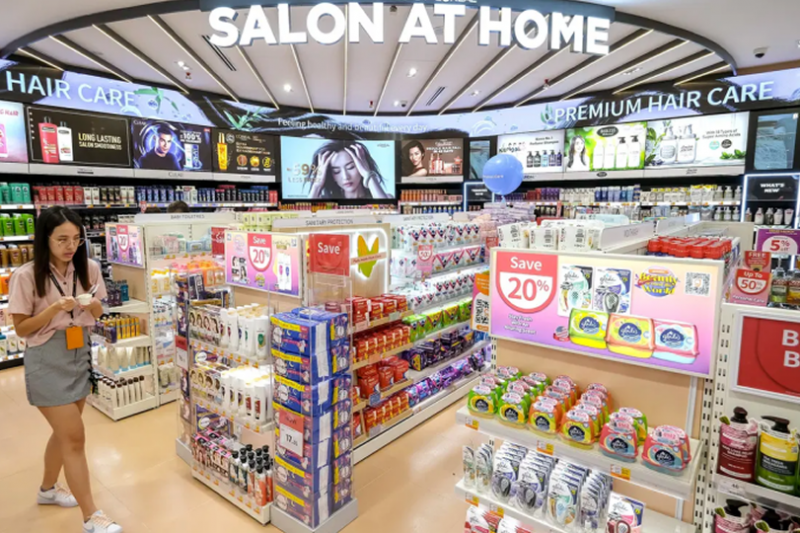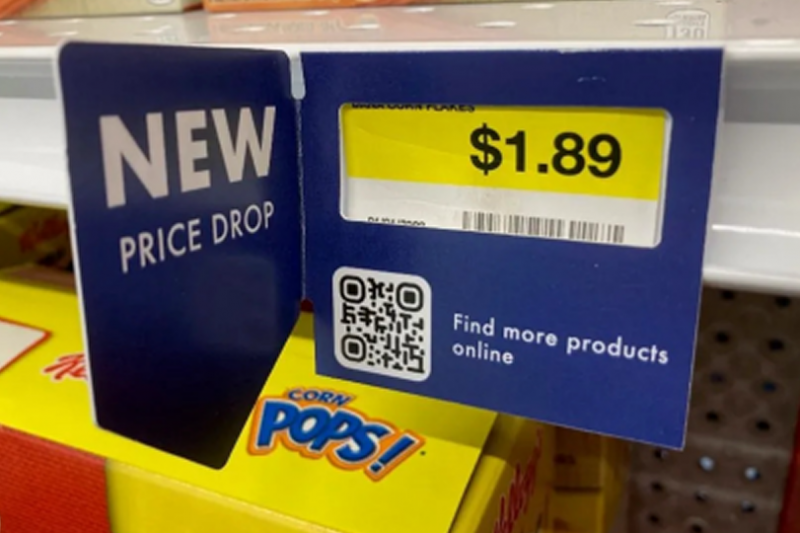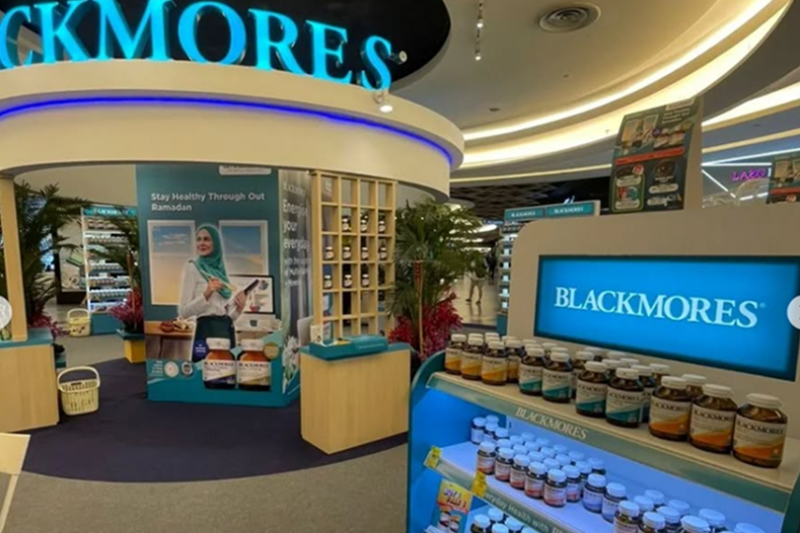In today’s crowded retail landscape, brands can’t afford for their POSM (Point-of-Sale Materials) to be an afterthought. Instead, they must treat it as a strategic journey, one that blends creativity, logistics, and shopper psychology to turn concepts into conversions.
Here’s a step-by-step guide to the full POSM campaign lifecycle, from first sketch to checkout shelf.
1. Define the Objective: Why Are We Creating This POSM?
Every POSM campaign must start with a clear strategic objective. Ask:
- What are we trying to achieve — awareness, trial, upsell, or loyalty?
- Who is the shopper? What’s their journey in-store?
- Which retail environment are we working within — hypermarket, pharmacy, convenience store?
A POSM campaign designed to drive impulse buys at checkout will look very different from one meant to educate shoppers at aisle level.
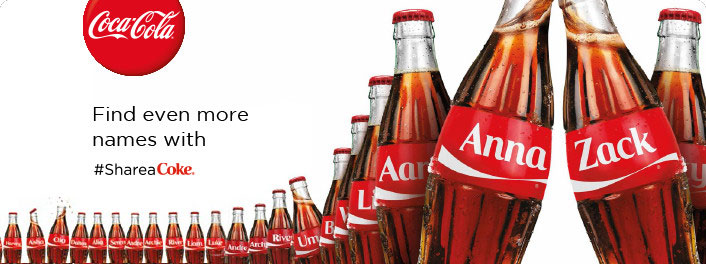
Example: Coca-Cola’s “Share a Coke” campaign used personalised name bottles and engaging shelf POSM that encouraged discovery and social sharing. It was simple, strategic, and perfectly designed to drive impulse picks.
2. Concept Development: From Brief to Idea
Once the objective is clear, the creative team begins shaping the idea.
- What’s the visual hook?
- Is there a unifying campaign message or call-to-action?
- How will the POSM bring the brand story to life?
This stage also includes identifying the right formats — standees, endcaps, shelf-talkers, dump bins, or digital screens, based on the campaign goal and store type.
At INK, this is where visual storytelling meets practical retail thinking. Concepts are sketched with store conditions, space limitations, and shopper behaviour in mind.
3. Design & Prototyping: Turning Ideas into Tangibles
Once a direction is chosen, designers create visual mockups and technical drawings. These prototypes allow for feedback before anything goes into production.
- Does it reflect brand identity and campaign tone?
- Are colours, fonts, and layout optimised for quick readability?
- Can the POSM be produced efficiently within budget?
A good prototype also considers practical assembly, so store staff can install it quickly and correctly.
4. POSM Production: Bringing It to Life
With designs approved, the campaign moves into POSM production. Materials are selected based on:
- Durability vs. disposability
- In-store conditions (e.g., humidity, lighting, traffic)
- Budget and sustainability goals
Common materials include:
- Cardboard (for short campaigns)
- Acrylic and metal (for permanent displays)
- Fabric or PVC (for banners and backdrops)
Production is not just printing. It’s engineering a product that must look good, survive transit, and perform in-store.
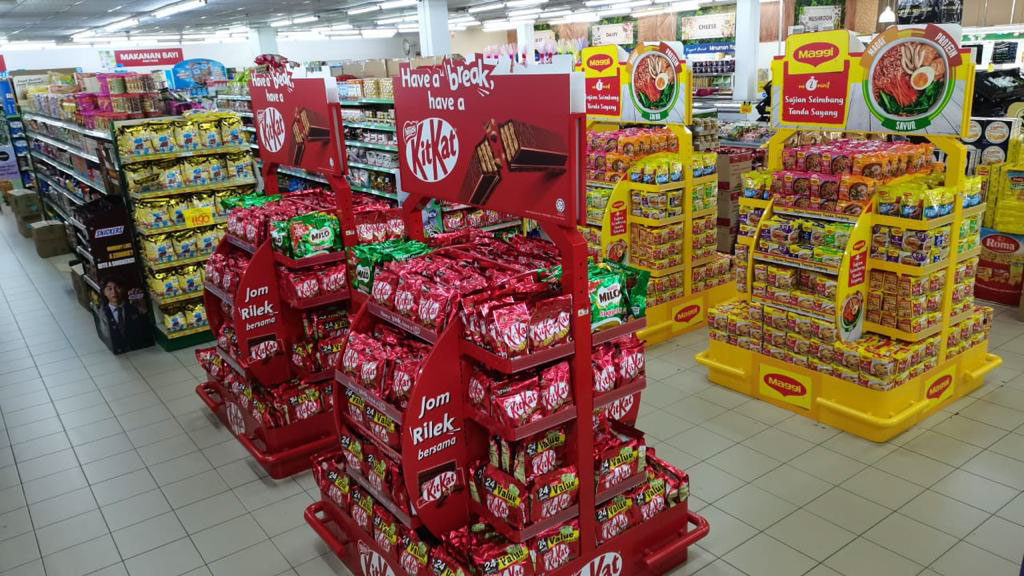
Example: INK transitioned Nestlé’s POSM from cardboard to sturdy, reusable metal blocks, allowing for long-term use across retail chains. The display’s modularity made it both efficient and eco-conscious.
5. Logistics & Distribution: Getting POSM to Stores
Timing is everything. POSM must arrive in stores aligned with campaign launches, seasonal events, or product releases.
- Are units being sent to the right retail chains and regions?
- Are displays flat-packed for efficient transport?
- Have clear setup instructions been provided to store teams?
Poor distribution can derail even the most brilliant creative. That’s why smart brands treat logistics as part of campaign execution, not an afterthought.
6. In-Store Execution: Bringing the Campaign to Life
Now comes the moment of truth — store activation. This is where strategy meets reality.
- Are displays installed in the correct locations (entrance, aisle, checkout)?
- Are they properly assembled and stocked with products?
- Are staff trained on key talking points if shopper interaction is required?
INK often includes store audit checklists and visual guides to ensure rollout consistency. What’s approved in the boardroom must match what’s seen on-ground.
7. Monitor, Optimise & Learn
Even after launch, the job isn’t over. Brands should track the POSM’s performance in real-time:
- Are sales moving in supported categories?
- Are shoppers engaging with the display (scans, samples, interactions)?
- Are certain formats outperforming others?
Post-campaign reviews help brands learn and iterate. From creative to logistics, every insight fuels better results next time.
From Concept to Checkout: Why It Matters
In a world of limited shopper attention and increasing retail clutter, POSM must work harder and smarter. It’s about performing at the shelf, where the decision really happens.
When done well, a POSM campaign is more than a display. It becomes a bridge between brand and buyer, turning a concept into conversation, and a product into a purchase.

